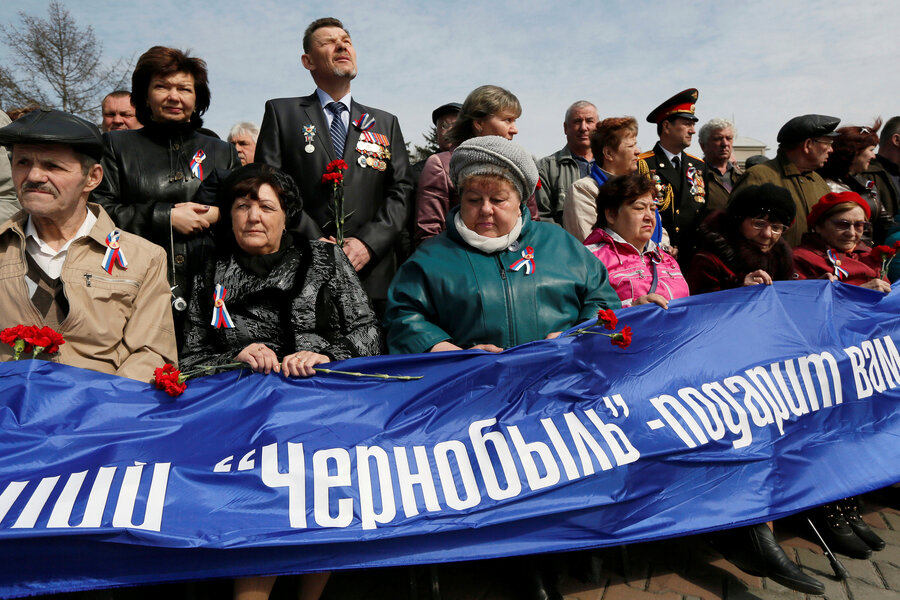30 years after Chernobyl disaster, Ukraine honors 600,000 'liquidators'
Loading...
Tuesday marked the 30th anniversary of the world’s worst nuclear disaster, the 1986 Chernobyl explosion in what is now Ukraine, that spread dangerous levels of radiation across Eastern Europe.
Though three decades have passed, the disaster still looms large for residents of the region. Currently, work is still being done to contain and clean up what remains of the explosion, with a $2.25 billion project to build a long-term structure over the site for containment reasons is nearing completion.
But on Tuesday, Ukrainian President Petro Poroshenko took a moment to honor those who sacrificed themselves to help in a moment of crisis.
"We honor those who lost their health and require a special attention from the government and society," Mr. Poroshenko said during a ceremony in Chernobyl. "It's with an everlasting pain in our hearts that we remember those who lost their lives to fight nuclear death."
A power surge at the nuclear plant during a reactor test on April 26, 1986 sparked a massive explosion that quickly spread fire throughout the plant. Radiation spread through Ukraine, Belarus, and Russia, as some 58,000 square miles surrounding the plant was contaminated.
The contamination led to widespread relocation of hundreds of small towns and villages and severe land restrictions for those remaining near the contaminated area.
In the direct aftermath of the explosion, roughly 600,000 people were sent in to the Chernobyl nuclear plant to battle the fire from the explosion and contain and clean up the worst of the radiation. The 600,000 were often known as Chernobyl “liquidators.”
Many surviving liquidators were present at the Ukrainian ceremony. Some dressed in white robes and caps, similar to the outfits worn by the first responders in the aftermath of the disaster.
Andriy Veprev, who had worked for 14 years at Chernobyl before the explosion and assisted in the clean up after, told the Associated Press that memories of the aftermath were still vivid.
"I'm proud of those guys who were with me and who are not with us now," he said.
Although some, like Mykola Bludchiy, who helped clean up the contamination, expressed dismay Ukrainian government plans to scale back benefits to the survivors.
"I went in there when everyone was fleeing, we were going right into the heat," said Mr. Bludchiy told AP. "And today everything is forgotten.”
Estimates for when the 150,000 square kilometers contaminated from the explosion will be fit for human habitation vary but Greenpeace, a nonprofit environmental organization, estimates it will take at least 3,000 years.
Researchers working and studying the 1,000 square-mile-area surrounding the Chernobyl plant known as the Chernobyl Exclusion Zone (CEZ), say that in spite of the devastation the Chernobyl does offer one slim silver lining.
The area may be uninhabitable for human for another 3,000 years but it’s becoming a stable, booming center for wildlife. A population of endangered wild horses reintroduced in 1990 have thrived alongside elks, wolves, bears, and lynxes.
“The lynx also shows a positive trend. It’s a red book listed animal, so it's great we can see contrast reproduction of lynx so their numbers are growing,” a researcher told the Agence France-Presse.
This report includes material from The Associated Press.






